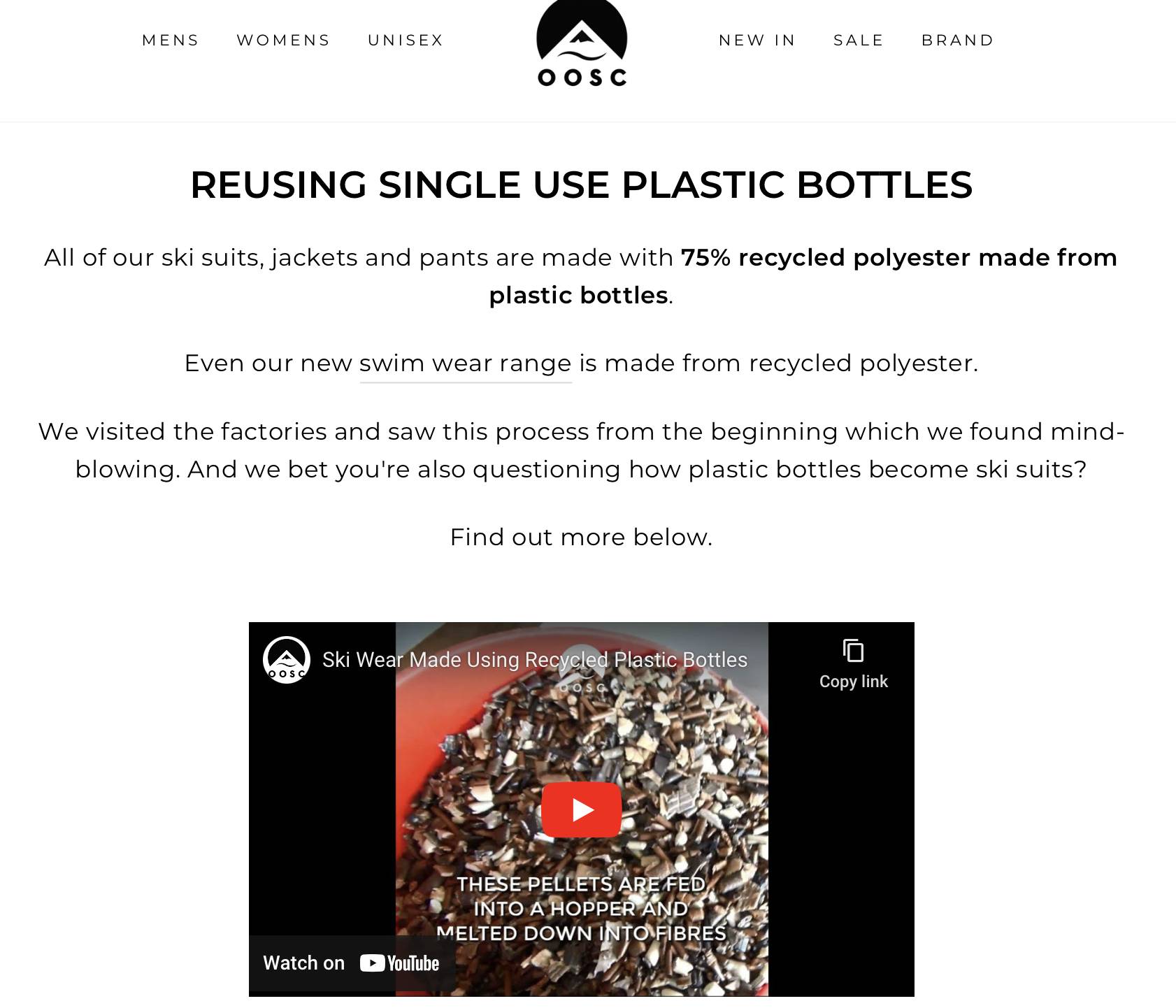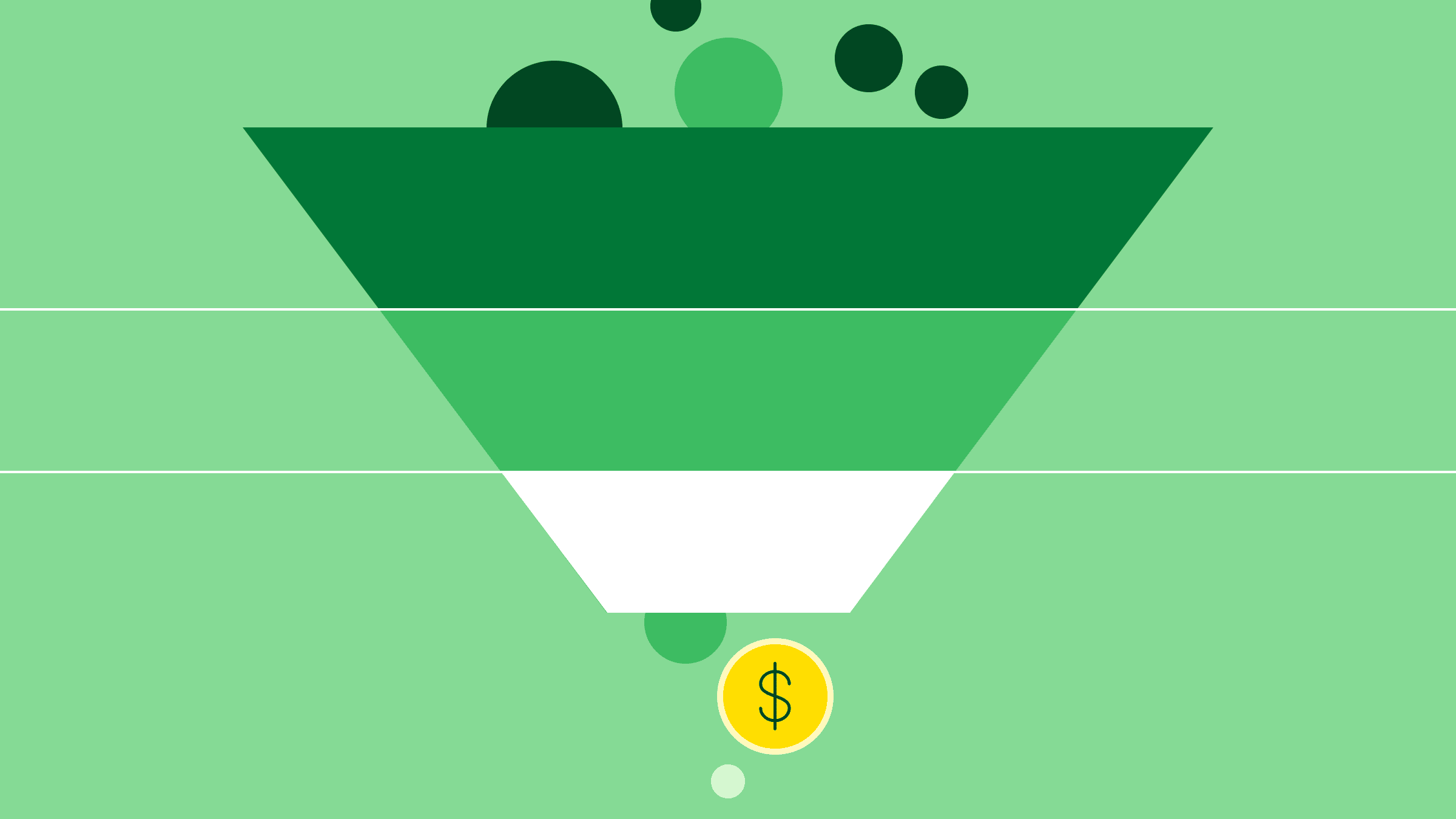In today’s competitive and ever-changing digital space, you need to know which marketing channels actually convert viewers into customers.
Small business marketing is typically carried out by a smaller team – often the owner themselves. It’s still possible to market your business effectively with far fewer resources than the big players.
In this article, you’ll learn practical marketing strategies for small businesses and how to attract your ideal customer base online.
Your small business marketing plan: Getting the foundations right
A well-laid-out small business marketing plan is key to attracting the right customers at the best moments in the customer journey. It also narrows your focus on marketing channels that actually work, so you don’t waste precious time and resources on strategies that don’t.
Here are three steps to create your small business marketing plan.
Step 1: Identify your target audience and their needs
Understanding your customers through market research is the starting point of any small business marketing journey. Your customers have unique concerns and your product or service helps them fulfill a specific job they need to do.
For example, a construction company may build residential houses, but simply expressing that they build houses isn’t going to win over the market. Market research might reveal that quality and efficient project management are the top concerns of their customers. These concerns should be embedded into the company’s brand messaging and value proposition to appeal to the customer and overcome objections right away.
Audience research doesn’t need to be an expensive exercise. It can be conducted through customer surveys, focus groups, customer interviews or any kind of existing customer interactions you might have.
Use your research to learn the answers to the following questions about your market:
What’s the typical demographic split of your customers? Consider their age, location and interests.
What are the top sites that they most frequently visit?
What social media (if any) do they use and what types of content do they engage most with on the platforms?
What problems they’re trying to solve? (This may be both related and unrelated to your product)
Do they spend time researching or are they impulse buyers? What are the factors that influence purchase decisions?
If they needed to contact a company, what’s their preferred method of contact (e.g. phone, chat or email)?
Group your customers into behavioral segments to learn how your product or service can specifically help each group. Returning to our construction example above, the company might market itself to two distinct groups: property developers and residents who are interested in extensions.
Map your marketing funnel and customer journey
A marketing funnel is a visual representation of the different stages of a customer journey. Most commonly, there are three major stages in a marketing funnel:
Top of the funnel (TOFU): Awareness and discovery
Middle of the funnel (MOFU): Researching solutions (also called “Consideration”)
Bottom of the funnel (BOFU): Making an educated purchase decision (also called “Conversion” or “Decision”)
Some funnels may also include steps such as “Retention” and “Advocacy” to account for after-sales service.
The likelihood with small business marketing is that the business owner, or a team member, may be dealing with the entire customer journey themselves. For this reason, it’s worth being aware of every stage and which actions lead to the next.
In the funnel, the audience narrows at each stage of the journey, with drop-off naturally occurring throughout, until the best quality leads make it to the very end. Your job as a small business marketer is to minimize drop-offs and help potential buyers reach the bottom, with as little friction as possible.
Due to high competition, very few customer journeys are linear. Your buyers might have several alternatives to investigate or multiple internal hoops to jump through before making a final decision.
Mapping your customer journeys to the marketing funnel helps inform your small business marketing strategy. You’ll better understand where they are in the decision-making process and learn ways to refine your approach to guide potential customers to a conversion.
Look at every potential starting point of your customer journey. Site analytics can show you where traffic comes from, while customer surveys or user testing will reveal insights into the behavior of people who ended up making a purchase.
Not every customer will start their journey on your website, and they may have gone through multiple touchpoints beforehand (e.g. word of mouth and searching for online reviews).
Go through the buying process and main decision points from your customer’s point of view. Consider what your audience is doing and their intent at each stage.
A customer journey map template can help document each stage if you need extra guidance.

Download our customer journey map template
Your customers may not always take the most direct route to purchase and the route may be different for different types of customers. Complete a customer journey map for every type of customer you hope to attract to understand their unique perspectives.
Assess the competition
A formal competitor assessment will clarify exactly how other brands are marketing their product. Identify areas of weakness in their strategy and consider improvements to your own approach.
Running an assessment will help you keep track of how your competitor’s offering evolves over time (e.g. when they add new products or increase their pricing). You can re-use the same format and refer back to this document if you decide to repeat the exercise in the future.
Take notes on your competitors' online presence, and answer the following questions for each brand:
Website: Is the website aesthetically pleasing and functional? Does it provide a good user experience?
Social media marketing: What social media channels are they optimizing and do they respond to customers there? Look at customer reviews and feedback.
Brand visibility: Where do they appear in search engine results? Has this changed over time?
Marketing strategy: Are they working with any other brands or influencers? Where are they advertising? It’s important to know if you’ll be able to outbid the big players when advertising your small business.
Go through each step of the customer journey on your competitor’s website, paying attention to details like the tone of voice used and how easy it is to perform a task. For example, you may test the sign-up process for their email newsletter or pretend to purchase a product.
This exercise puts you in the shoes of a potential customer while providing inspiration for what resonates and how you can stand out.
To help you analyze your competitors, use our competitor analysis template, which you can request below.

Download our competitor analysis template
Small business marketing strategies to focus your efforts
Once you’ve completed the first part of your research, you can start to refine and develop your overall strategy.
Crafting a USP
Your unique selling proposition (USP) should give buyers a compelling reason to purchase from you rather than the competition. It needs to be concise, easy to understand and reinforce exactly how your brand is different.
The USP will be used throughout all your small business marketing communications, so it needs to highlight your brand values. Consider how your product or service is superior – this could be based on product quality or eco-credentials.
Small business skiwear brand OOSC prides itself on producing all of its clothing from recycled plastic bottles, and its USP focuses heavily on sustainability. They have a dedicated page on their website to the topic, together with a video on how the plastic bottles are re-used.

Lean into the findings from your target audience and competitor research. The best USPs demonstrate how they solve a problem for their users.
Another example of a good USP in practice comes from Forge, an educational talent accelerator that started as a student-run project. They help US students find internships in tech companies, and their USP clearly communicates this niche, with clear calls to action on the homepage.

Your brand story and messaging
Your brand’s story aims to build resonance with potential buyers. It needs to be inspirational, persuasive and memorable enough to make customers pay attention and recall your brand.
Brand messaging meanwhile is the underlying foundation that sets the tone for every piece of content and messaging you produce. Honing your messaging is crucial for your small business advertising, as it ensures that your output is always consistent and on-brand.
It’s possible to go really in-depth at this stage, but focusing on these four key areas will help you drill down into what’s most important to your business.
Set a brand promise
What do you want your brand to stand for, and what will you never compromise on? This statement should be short and sweet, no more than two sentences ideally.
Create a positioning statement
Think of this step as an elevator pitch. How would you describe your business in 30 seconds? This statement should quickly capture what you sell, who your target audience is and where you stand in your industry.
Your brand’s mission
Further set the scene for what your audience can expect from your brand. Using your brand promise and positioning statement as a starting point, you can expand here on core principles and what your brand plans to achieve.
Tone of voice
Knowing how your target audience likes to communicate will help you set guidelines for the tone of voice that you want to convey in your messaging. Can you inject humor into your brand, or do you need to take a more professional stance?
Put these elements together to create your brand messaging framework.
These will become the central pillars of your small business marketing plan, guiding future communications and ensuring that customers know who you are and exactly what you stand for.
For instance, kids’ furniture retailer Nugget features a playful tone of voice on its homepage: “Part-furniture, part-toy, and all-around the best thing to happen to playtime since, well, ever”.

Nugget also manages to convey its brand mission of being “leaders in the play furniture industry” (with an emphasis on "play" in its creative messaging).
Craft your brand voice around the personality you want to convey. For example, Nugget has chosen a light and friendly tone as it aligns with its mission and the enjoyment its product offers. The best method of understanding what will resonate with your customers is by talking to them and asking them about their preferences.
Once you’ve established your own framework, put it into a PDF document or slide deck to guide any new staff or freelancers on your messaging and values. This will ensure that discordant or unclear brand messaging is never an issue.
Set your marketing goals
Before starting any type of small business marketing campaign, you need to set goals for what you intend to achieve.
Setting sales goals that are both challenging yet also attainable will motivate you and help propel your business toward long-term success. Think of your marketing goals as a steering wheel guiding your brand. Without goals in place, your overall strategy will feel directionless.
Consider what your ultimate goals are, such as:
Increasing brand awareness
Attracting new customers
Generating more sales
You might have multiple goals that you hope to realize. Setting them up now within appropriate timeframes will help steer your marketing strategy.
One of the best ways of setting goals is to follow the SMART framework (Specific, Measurable, Achievable, Realistic and Time-based).
Having specific and measurable goals will give you a focus, but make sure they’re realistic and attainable too.
Marketing is a marathon, not a sprint, and part of the process is adapting as you learn more about your audience. You’ll most likely need to make continual tweaks and improvements as you go, depending on how your marketing channels perform.
Once you’ve set your goals, monitor your progress with monthly or quarterly check-ins to stay on track.
Marketing channels that work for small businesses
You’ve laid the groundwork and refined elements of your small business marketing strategy. Using what you’ve learned about your audience and where your competitors are promoting themselves, you’ll want to determine your most appropriate channels.
Concentrate your efforts on just a couple of marketing channels, rather than spreading yourself too thinly by attempting to cover them all.
Here are some low-cost marketing tips for a small business that will achieve results:
Build an SEO and user-friendly website
Your website is a good place to start. It’s your virtual shop front and acts as a primer for your audience, engaging them to eventually buy.
If you’re building a site yourself, drag-and-drop website builders such as Squarespace and Wix are great options that don’t require any coding knowledge.
You can optimize the site for search engine optimization (SEO) by including relevant keywords throughout and following best-practice SEO guidelines. This means adding keywords throughout in website copy, page titles and meta descriptions.
Pay attention to site hierarchy and create internal page links, as search engines prioritize well-structured sites and it improves navigation for users.
SEO is a huge topic, but there are basic steps to take to give your website the best chance of getting seen organically. For starters, optimizing your site for relevant keywords and creating your site hierarchy helps search engines index it and decide where to rank it on their results pages.
At this stage in the website build, you may decide to incorporate some additional features to automate marketing tasks. Here are a couple of user-friendly website features to consider:
Automated web chat tools
These are a great way to engage with your visitors and capture leads. If you’re operating as a one-person firm, it’s not possible to physically operate a live chat 24/7, which is why lead generation software is a worthwhile investment.
Web forms and live chat help capture and safely store your leads, answer users’ questions and provide visitors with added engagement. You can even customize how the web chat responds to your most frequently asked questions.
Scheduling tools
If you’re running a business that relies on booking appointments, calls or meetings, an integrated scheduling tool could be exactly what you need. These tools sync your calendars automatically and manage even the most complex of schedules, saving valuable time.
Content marketing
Add a blog to your site to keep it updated with engaging, relevant content. Search engines prefer sites that regularly update their content, which is why SEO goes hand-in-hand with creative content marketing to attract visitors to your website.
Set up a marketing calendar to help you plan content and structure your small business marketing efforts more efficiently. It’ll also ensure you stay accountable to deadlines, achieve digital marketing goals and ease collaboration, particularly if you plan to outsource content creation.
Some content marketing tasks can be easily automated to speed up workflows and reduce human error. For example, content marketing automation tools can automate emails at specific trigger points, such as email newsletter sign-ups, or schedule a blog post to go live at a specific time.
The good news about content creation is that content can be repurposed multiple times across different channels. If you’ve written an article for your website or appeared on a podcast, snippets of the content can be dissected and used across social media platforms.
Start small with your content marketing efforts and be realistic about how often you’ll be able to create new content. For example, aim for one blog post a month and one social media update a week, if that feels achievable. You can build up frequency as you scale your business and your site gradually increases in domain authority.
Social media
Social media is a powerful tool for brands who are looking to increase brand awareness and engage with their audience. A 2021 survey found that 78% of consumers are more willing to buy from a brand following a positive social media experience with them.
The caveat to this is choosing your social media platforms wisely, as the audiences on each vary wildly and are receptive to different kinds of content.
Research has found that 72% of US adults are on social media. Explore each platform’s most popular demographics and also how users explore each platform to determine where to concentrate your efforts. Your strategy will depend on where you’re more likely to be seen by your audience and what type of content you’re able to create.
For instance, if you’re targeting an audience of 50–64 year-olds, they’re more likely to be found on Facebook than Instagram. LinkedIn attracts a more professional audience. Whilst on Instagram, a Gen-Z audience increasingly expects to shop directly through their social media feed.
Email marketing
There are multiple reasons why email marketing should form a key part of online marketing for small businesses. The global market for email is estimated to be worth $12.4bn and growing. It also drives the highest return on investment (ROI) of any other channel, reportedly achieving $36 for every dollar spent.
Email is an entirely owned channel that you can leverage for multiple purposes, not just direct selling. If social media disappeared tomorrow, it wouldn’t affect your email list.
A good customer relationship management (CRM) system allows you to organize and segment your audience, according to their stage in the buyer journey. In addition to keeping your customer data securely in one place, they allow you to manage customer journeys and discover actionable audience insights.
If you’re entirely new to the world of email marketing, don’t let that put you off. Free email marketing courses exist to help users master the basics of email marketing and keep on top of best practices.
Tracking your online marketing efforts
Monitoring marketing performance via site analytics and social media insights fuels your strategy and will help you discover what’s working. Regularly updating your records to gain the confidence to course-correct if necessary so you can meet marketing goals.
Each marketing channel comes with insights, and website builders have in-built analytics. You’ll also want to connect your website to Google Analytics (GA) to provide further insight into visitor data and behaviors once they land on your site.
GA is free to use and provides a wealth of data, including:
Breakdown of devices used
Average time spent on site and bounce rates
Customer demographics such as age, gender and location
Where your traffic is coming from – direct, search, paid, email, third-party site referrals, social media, etc.
Your top-performing content and number of page views
Conversions and average product values for e-commerce sites
GA is a vital marketing tool for tracking website performance and making data-driven decisions.
For social media you’ll have a different range of metrics to track, including:
Impressions (the number of times your content was viewed)
Engagements (metrics such as likes, shares, mentions, retweets, clicks, new follows and replies)
Overall engagement rate
Visits to your profile page
Revenue generated directly from social media
Your social media goals will be unique to your brand. For instance, for some brands a social media page is simply a launch pad to their website, while others use social media to build online communities.
Google Search Console is another free-to-use tool that integrates easily with your website, giving you visibility on which specific pages and keywords are driving traffic, together with information on search performance. It also flags up any security issues and reports on site speed.
It will take some time for each channel to gain momentum after the initial set-up, but after several months, you’ll have a clearer idea of which ones are attracting the right customers. You’ll be able to see which channels you can attribute sales or leads to, and what the ROI is like. From there you can make continual adjustments and improvements to streamline your sales lifecycle and optimize the customer journey.
Final thoughts
There are myriad ways to advertise your small business online. It’s just a matter of focusing on the channels that are right for your audience and brand. It’s entirely possible to bootstrap your business with low-cost marketing channels that we’ve covered here, even if you are learning as you go or operating as a marketing team of one.
Spending time on market research and your small business marketing strategy will serve you well further down the line, as you refine your online marketing plans. You’ll find that a lot of marketing is trial and error, but tracking your analytics and performance data from the very start will give you the confidence to make data-driven decisions as your brand grows.















